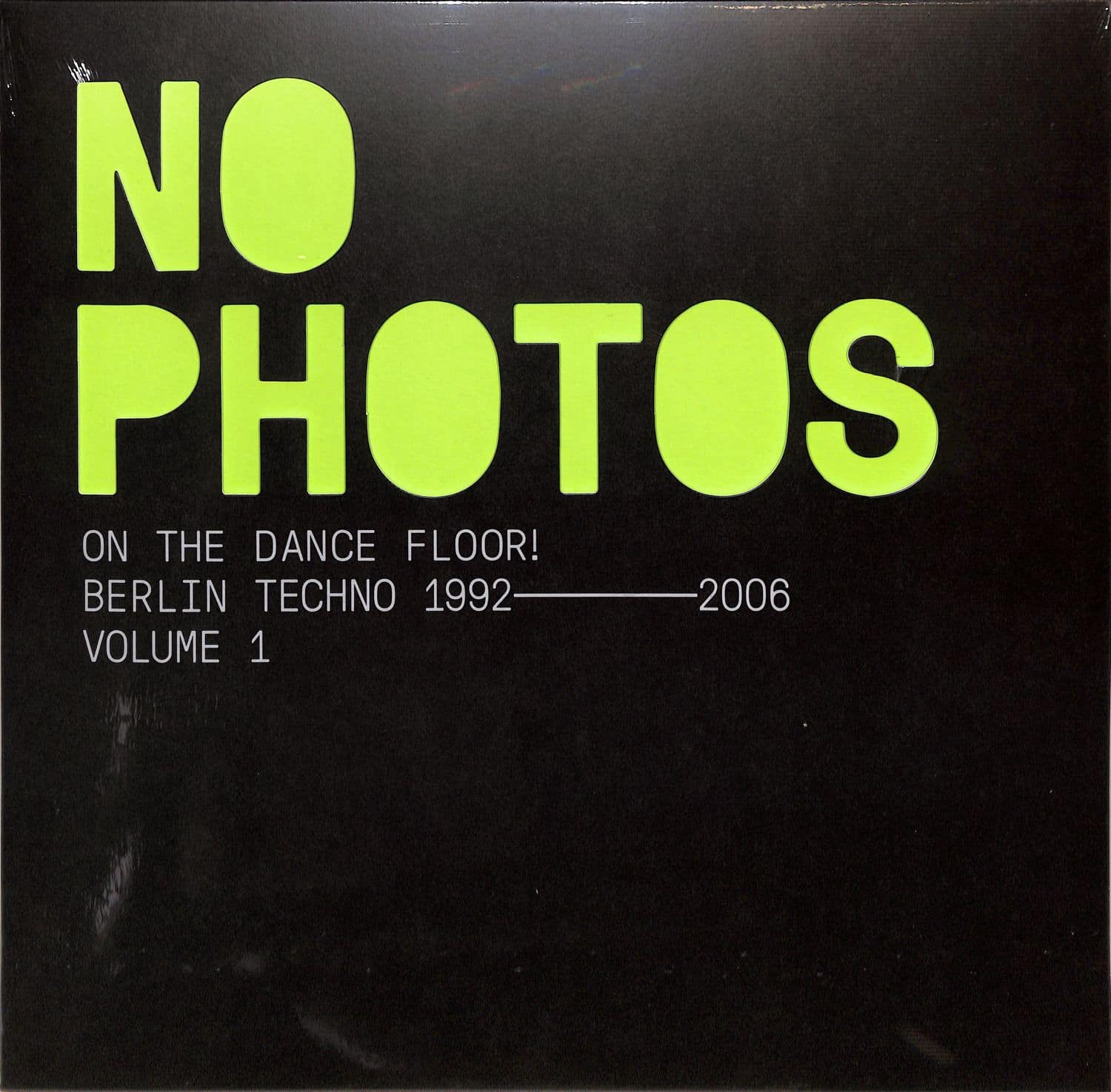NO PHOTOS ON THE DANCEFLOOR BERLIN TECHNO 1992- 2006 VOLUME ONE (2LP)
2x 12 Inch

Part 1 of 2, compiled by Heiko Hoffmann (EX Groove Mag Editior), includes Printed Inner Sleeves And Die Cut Outer Sleeve
'No Photos on the Dance Floor! Berlin Techno 1992Today', compiled by Heiko Hoffmann, follows a hugely successful photography and video art exhibition by the same name that was co-curated by Hoffmann and shown at C/O Berlin in late 2019. The exhibition included works by photographers and visual artists such as Wolfgang Tillmans, Romual Karmakar, Sven Marquardt and Camille Blake, that dealt with Berlins club culture since the fall of the wall. It was followed in 2020 by a book of the same name which collected together the most striking imagery from the exhibition alongside interviews and personal essays.
'No Photos on the Dance Floor!' is the first compilation to trace the history of techno made in Berlin over the last three decades, with a selection of classics and hidden gems that have helped shape Berlins sound from the early 90s until now. The title refers to a particularity of the Berlin club scene: photography is banned in almost all the important clubs to allow partying together in a space where you can lose yourself to the music and feel free and safe at the same time.
After the Berlin Wall fell in 1989, abandoned spaces and buildings were waiting to be filled with new life in the form of clubs, bars, galleries, workshops, and studios. Berlin became the epicenter of a new nightlife culture that soon resonated around the world. Berlins techno scene was heavily influenced by the pioneering sounds of Detroit techno created by African-American producers such as Juan Atkins, Kevin Saunderson and Underground Resistance.
Their records were imported to the Berlin DJ scene by the record store Hardwax, based on the ground floor of a building on Reichenberger Straße in Kreuzberg, from December 1989 onward. The original temples of DJ culture in New York amd Chicago, as well as the emerging rave culture developing in London and Manchester via Ibiza, would also go on to shape Berlins nightlife. Party series like Tekknozid and clubs such as Ufo, Tresor, and Planet can retrospectively be interpreted as the big bang of the first shared culture between Germany's East and West, having paved the way for what is still the last and biggest expression of European youth culture.
Part 1 of the vinyl edition focuses on the period between 1992 and 2006, with early 90s tracks by Thomas Fehlmann and Moritz von Oswalds 3MB project (who teamed up with Detroits Juan Atkins on compilation opener 'The 4th Quarter'), Berlin techno pioneer DJ Tanith and Mijk van Dijks short-lived project 9-10-Boy, von Oswalds and Ernestus influential Maurizio alias, and Alec Empire, who would later go on to start influential noise/industrial band Atari Teenage Riot. Further key tracks from the first half of the aughts come from Mo Loschelder and Klaus Kotais Elektro Music Department label, Sleeparchive and Ableton Live-developer Robert Henke aka Monolake.
Part 2 is drawn from tracks made between 2007 and today, starting at a point when the city became the center for a new creative community of international artists, DJs and producers who often favoured the minimalist aesthetic & musical styles of clubs such as Berghain, Bar25 and Watergate and stayed for the ease of living. Beginning with a remix by Plastikman aka Richie Hawtin of his Minus label signee Heartthrob, the two 12"s also feature contributions from Ben Klock, Avalon Emerson and Modeselektor.
In addition to the two-part vinyl release, 'No Photos on the Dance Floor!' will also be available in expanded CD & digital formats, featuring additional tracks by Rødhad, Efdemin and Ricardo Villalobos.
The record was compiled by Heiko Hoffmann, former editor of Groove magazine and co-curator and co-editor of the 'No Photos on the Dance Floor!' exhibition and accompanying book. The double-vinyl release also features full-format photography by George Nebieridze and Wolfgang Tillmans.